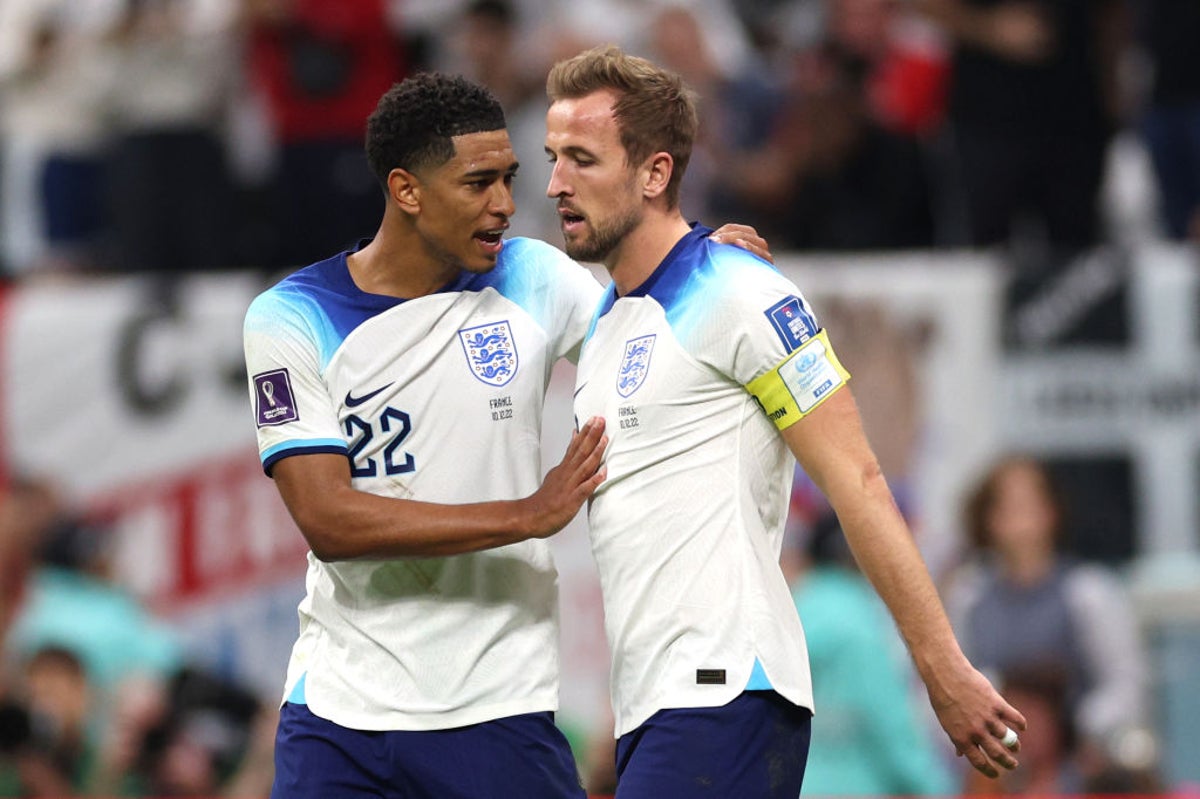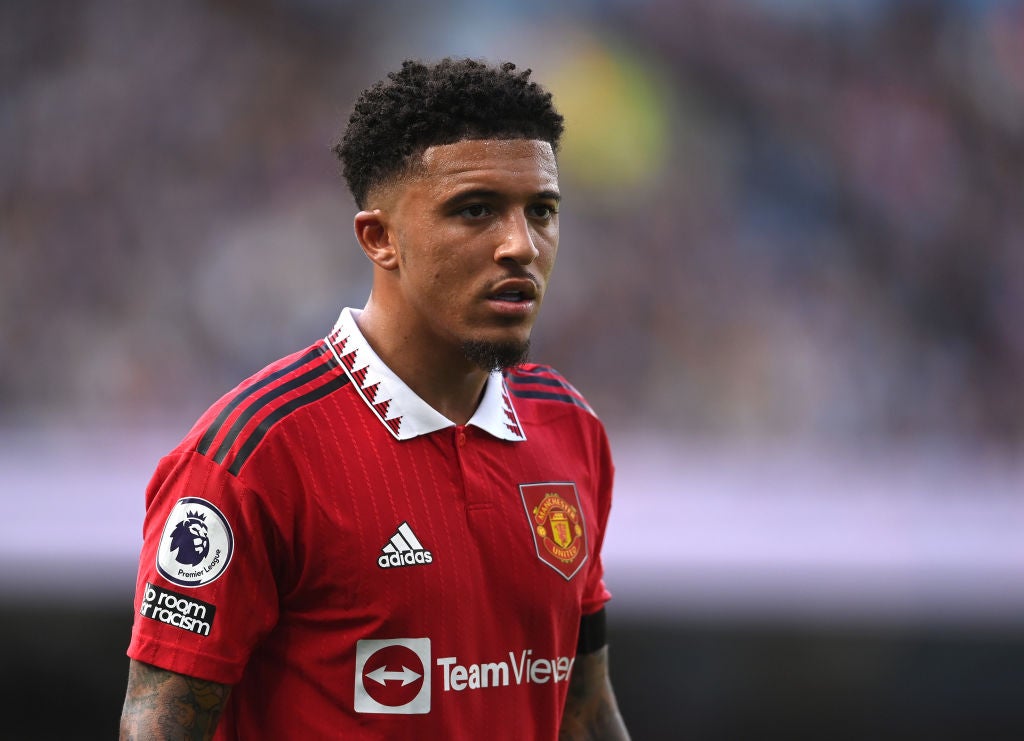
The oldest player in England’s Euro 2020 squad was also the oldest in their World Cup 2022 squad. And if, in Kyle Walker, he may have also been the quickest, there is the possibility that a flying 36-year-old could still be the fastest footballer in England by the time the next World Cup kicks off.
But the probability is that Walker’s World Cup career ended with his excellent display against Kylian Mbappe on Saturday. He will not be alone in that. England’s age profile felt almost perfect for Euro 2020 and this World Cup. They have little need for a huge overhaul ahead of Euro 2024. But by the time that, assuming they qualify, they head across the Atlantic in 2026, it will be with a different cast list. Probably a different manager, too, and Gareth Southgate’s eventual successor, whether now or in 2024, will have his own priorities and preferences. The squad in four years’ time will reflect system and style of play, which players have progressed and regressed, who is injured and who has emerged.
But there will be changes. Walker and Kieran Trippier could make way for a younger generation of right-backs, in Reece James and Trent Alexander-Arnold - who probably needs a change of manager to get an extended opportunity. England are short of high-class left-footed left-backs and, if Luke Shaw is not at a third World Cup, 12 years after his first, a right-footer in James Justin, might man that flank.
Southgate’s favoured group of centre-backs will all be in their thirties before Euro 2024, let alone the next World Cup.
John Stones, as the classiest, may have the most staying power while Harry Maguire’s lack of speed could curtail his England career. Of a younger group, Joe Gomez’s pace and potential can be undermined by injuries and inconsistency. Levi Colwill has the advantage of being left-footed, which will be still more important if the left-sided Harry Maguire makes way. Ben White, Marc Guehi and Fikayo Tomori represent options Southgate has not properly explored.
In midfield and attack, England could face contrasting scenarios.
They seem set to have a surfeit of alternatives for the attacking midfield, wing and No.10 positions; rather fewer compelling choices for top-quality defensive midfielders and out-and-out strikers.
It makes Declan Rice still more important and increases the chances Kalvin Phillips, with his passing range from a holding role, will be required after his 30th birthday; there is no natural successor to Jordan Henderson though Mason Mount, who has been displaced by Jude Bellingham now, may want to drop deeper to try and get in the team alongside the Borussia Dortmund prodigy.
Bellingham is so precocious that it is possible he is England’s youngest player in successive World Cup squads. Harvey Elliott, 12 weeks his senior, could be in his peer group in 2026. Maybe Carney Chukwuemeka could leapfrog his former Aston Villa teammate Jacob Ramsey, his current Chelsea colleague Conor Gallagher and Emile Smith Rowe, for a role as a box-to-box runner.
Certainly competition for places could squeeze out some talents.
Raheem Sterling and Jack Grealish will both be the wrong side of 30 by 2026; Sterling, like Shaw, was a teenager in the 2014 squad and his would be a career of extraordinary longevity if he is still around but a Southgate favourite may find himself benched more often by another manager to prioritise Phil Foden, Bukayo Saka and Marcus Rashford. Grealish could face a challenge from another Pep Guardiola is polishing up, in Cole Palmer. James Maddison may find Foden or Bellingham installed as a No. 10 by then.

Jadon Sancho represents a talent who could be back on the right track by 2026. Another is already being rehabilitated and, blessed as England are with gifted attackers, they may not be able to ignore Marcus Edwards for much longer.
He has operated as a striker at times for Sporting CP and, in the absence of a production line of No. 9s, the versatility of the two Marcuses, Edwards and Rashford, might be useful: either could be playing in a central role in 2026. Perhaps weight of goals and the need for a focal point in attack will enable Tammy Abraham to force his way in, but a futuristic punt may be Leeds’ dynamic impact substitute Joe Gelhardt.
And perhaps the oldest member of the 2026 squad will have 70 or 80 international goals by then. Harry Kane will not turn 33 until after the next World Cup. A lack of alternatives may keep him integral even if this World Cup has shown the difficulties of building around an ageing striker. But by then, it should be the team of Foden and Bellingham and Saka and Rice. The focus may switch from Southgate’s stalwarts to the youngsters he has blooded. The squad will be shaped by him, but could have the imprint of a successor with different ideas and featuring new faces.
Possible England squad for 2026 World Cup (ages as of 1 June 2026)
Goalkeepers
- Jordan Pickford, 32
- Aaron Ramsdale, 28
- Dean Henderson, 29
Full-backs
- Reece James, 26
- Trent Alexander-Arnold, 27
- James Justin, 28
- Ben Chilwell, 29
Centre-backs
- John Stones, 32
- Levi Colwill, 23
- Marc Guehi, 25
- Fikayo Tomori, 28
- Ben White, 28
Central midfielders
- Declan Rice, 27
- Kalvin Phillips, 30
- Jude Bellingham, 22
- Carney Chukwuemeka, 22
Attacking midfielders and wide forwards
- Harvey Elliott, 23
- Mason Mount, 27
- Phil Foden, 26
- Jadon Sancho, 26
- Bukayo Saka, 24
- Cole Palmer, 24
Strikers
- Marcus Rashford, 28
- Marcus Edwards, 27
- Joe Gelhardt, 24
- Harry Kane, 32







